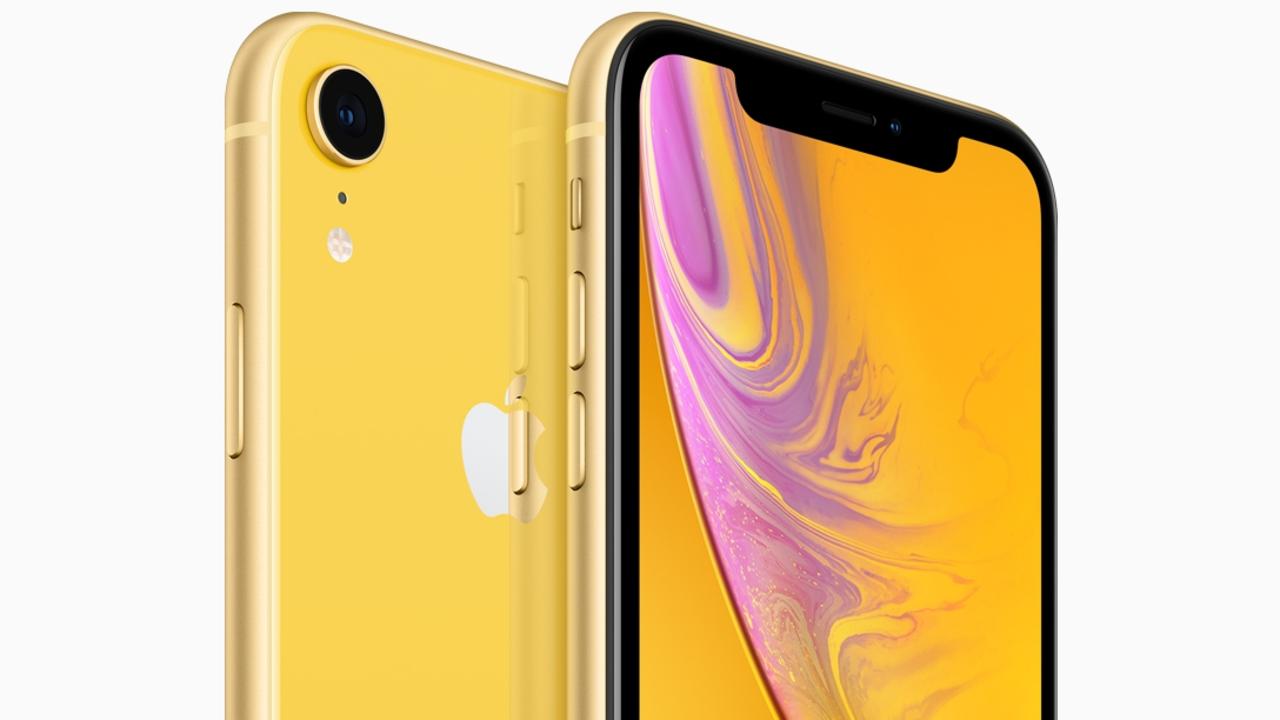Apple iPhone XR Australian review: Is Apple’s cheapest next-generation iPhone worth it?
REVIEW: It’s Apple’s response to record-breaking smartphone prices and promises to deliver many of the same features as its pricier peers. But does the iPhone XR compromise too much?
IT SOUNDS a lot like “the iPhone Tenner” when you say it out loud, and maybe that’s apt.
Apple will launch the cheapest model in its new smartphone range this Friday and, despite a significantly smaller price, the iPhone XR promises to deliver many of the same features as its pricier peers.
Even though you’ll save $550 buying this phone rather than the top model XS Max, for example, it will deliver the same speed, facial lock, wireless charging, and even the same striking selfies.

But there are compromises inside Apple’s first R model phone too. Some are obvious (like the screen technology), while others might surprise you (no cat portraits here).
This is what you need to know to pick a winner this smartphone season.
JUST AS GOOD OR BETTER
Apple is a tech company not known for inexpensive options.
High-end, meticulously designed, metal and glass objet d’art are its bread and butter, making this wallet-friendly iPhone a rare item indeed. Maybe that’s the R really stands for.
The iPhone XR is not as cheap by Android phone standards, though, and that’s because it retains a lot of the most important features in this year’s iPhone line-up.
The cameras on the front of this smartphone deliver Apple’s facial recognition lock, Face ID, allowing this handset to lose the fingerprint sensor, introduce those fluid, swiping gestures, and fit a bigger screen into its body.

That screen now measures 6.1 inches, making it slightly larger than the canvas on the iPhone XS, and much larger than the phone from which you may be upgrading (like the iPhone 7 with its 4.7-inch display).
Having the same cameras on the front of this phone also means the XR can take Portrait Mode selfies just as well as the iPhones XS and XS Max.
Importantly, Apple has also ensured this phone runs quickly and can handle demanding apps, thanks to the same A12 Bionic chip and Neural Engine as the other two phones.
Wireless charging and screen brightness is also matched in this smartphone, but the iPhone XR goes one step better on body colours and battery life. It comes in an array of striking hues and delivers an additional five hours of talk time over the iPhone XS and three hours more internet use.
WHAT YOU’LL GIVE UP
To cut iPhone costs, Apple had to compromise on some iPhone features, and the XR’s screen and rear camera take the biggest hits.
Obviously, there’s only one camera on the back of this iPhone rather than two.
Apple has used the same f1.8 wide-angle camera as in the other phones, and employs software to mimic the Portrait Mode skills of its peers.

This is surprisingly successful when it comes to photographing people. Some flyaway hairs may be erased in the process, but users can bring them back in the editing process.
This version of Apple’s Portrait Mode only works with human faces, however. You cannot capture artful portraits of cats, dogs, food, or flowers with the iPhone XR. If it doesn’t recognise a face in the scene, it just won’t work.
This software-fuelled version of Portrait Mode only delivers three of the feature’s usual five settings (natural, studio, and contour), and without a second camera, the iPhone XR cannot offer optical zoom.
The iPhone XR’s screen, while a generous 6.1 inches, is also less impressive than that of its peers.
It uses LCD rather than OLED technology, is not capable of showing HDR content, and features fewer pixels and less contrast than screens on the iPhone XS and XS Max.
Despite the inclusion of IPS technology, it’s also darker when viewed from an angle.
The iPhone XR screen compromises are plain when compared to a iPhone XS. Even photos taken with the iPhone XR look brighter, warmer, and more dynamic on the XS screen. By comparison, colours look somewhat dull and flat on the budget phone.

More subtle compromises include a lower water resistance rating (it can sit in one metre of water for 30 minutes, rather than two metres), its 4G connection is not as fast, and it is larger and heavier than its XS rival.
IPHONE XR VERDICT
Apple has created this iPhone as a model for the masses and, while it won’t meet everyone’s definition of cheap, it offers a significant saving on this year’s record-breaking, wallet-shrinking phone prices.
Budget-conscious iPhone 6 and 7 users would be wise to consider the XR as an upgrade option, particularly given its similar, refined design, larger screen, and the inclusion of a chip delivering a noticeable speed boost.
The iPhone ‘Tenner’ will also give users the chance to use Face ID and the easy software shortcuts that come with it.
Smartphone photographers might find this handset too much of a compromise, however, as it omits important iPhone camera innovations and delivers a screen that, while easy to read, delivers uninspiring colours by comparison.
Ultimately, whether the iPhone XR is a 10 out of 10 for you will depend on whether you’re more motivated by saving dollars or taking the best darned cat portraits possible.

$1229-$1479
PROS:
-$550 cheaper than the iPhone XS Max
-Uses Face ID, wireless charging, A12 Bionic chip
-Larger screen than the iPhone XS
-Longer battery life than the iPhone XS
-Same selfie camera as its pricey peers
CONS:
-Lower resolution and contrast LCD screen
-Single camera without optical zoom
-Portrait mode works only with people
-Less water resistant than peers
-Larger and heavier than iPhone XS


